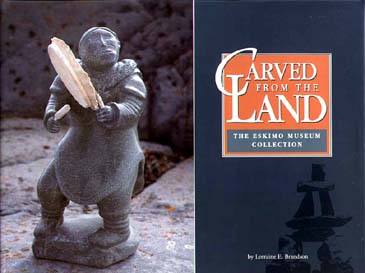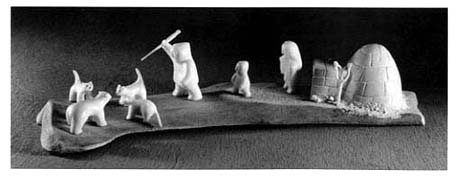Table of Contents
*
The Return
*
Dogs in Greenland
*
The Contribution of Dogs to Exploration in Antarctica
*
Page from the Behaviour Notebook: Raising Raven
*
Antarctic Sketches
*
Physiology of Sledge Dogs
*
The Qitdlarssuaq Chronicles, Part 2
*
News Briefs:
Thesis update
Blue Eye update
Mailbag
*
Product Review: DirectStop®
*
Book Review: Carved from the Land
*
Tip for the Trail: Re-lining Water Jug Caps
*
IMHO: Preservation vs. Saving
Navigating This
Site
Index of articles by subject
Index
of back issues by volume number
Search The
Fan Hitch
Articles
to download and print
Ordering
Ken MacRury's Thesis
Our
comprehensive list of resources
Talk
to The
Fan Hitch
The Fan
Hitch home page
ISDI
home page
Editor: Sue Hamilton
Webmaster: Mark Hamilton
Contents of The Fan Hitch Website and its publications are protected by international copyright laws. No photo, drawing or text may be reproduced in any form without written consent. Webmasters please note: written consent is necessary before linking this site to yours! Please forward requests to Sue Hamilton, 55 Town Line Rd., Harwinton, Connecticut 06791, USA or mail@thefanhitch.org

Carved from the Land: The Eskimo Museum Collection
by Lorraine E. Brandson
reviewed by Sue Hamilton
It has always been my contention that no matter how much you value the working/survival qualities of your Inuit Dogs (or your friends ISDs, if you don't happen to own any), you cannot fully appreciate how they got that way without an understanding of their provenance. Indeed, the mid-1970s Eskimo Dog Recovery Project co-founder John McGrath stated in a January 1998 presentation on the breed that its future "is not in the dog show world with dogs on a leash, but in a sealskin or webbing harness in the North." McGrath concluded his speech, "We cannot separate the dogs, the place and the people." Although he may have been referring to the present and the future, it is the past that wrought the breed we know today.
Carved from the Land is far more than just a presentation of the extraordinary fifty-plus year collection of Inuit art and artifacts currently on display at the Eskimo Museum, owned and operated by the Diocese of Churchill Hudson Bay. Fortunately for us and all lucky enough to have visited this wonderful treasure opened in 1944 by the Roman Catholic mission in Churchill, Manitoba, Canada, the priests understood the value of collecting "carvings" not so much for their beauty, but because they were representative of Inuit life and culture, courage and adaptability. Within its two hundred pages, Carved from the Land offers readers a comprehensive window into Inuit history, with text rich in detail as well as in the sumptuous inclusion of black and white photographs of carvings and other images, sketches and maps. Most of the of carvings are accompanied by information on the artist and the materials used as well as in depth explanations of what the pieces represent.
Chapters describe environment and adaptation, archaeology, yearly cycles of activity, history of contact with white people, the development of written language, hunting and fishing, staying warm, food and shelter, all means of travel and transportation, personal life cycle, the transition from traditional spirituality to western religion, and more. There are personal accounts quoted by missionaries and Inuit alike, dozens of stories and legends and scores of Inuktitut words translated in to English. The reader learns how dogs were used for hunting, sledding and packing belongings, how snow houses were constructed, how meat was butchered and prepared, the importance of fat, how skins were prepared and sewn...
"SEAL SKIN THONGS: Strong ropes or thongs were necessary for many implements including dog whips, dog harness line, drying racks, tent lines, packing lines, ropes for athletic games, lashes for sleds, tools and weapons. Most thongs were made from the skin of the ugjuk [bearded seal] that was cut into a number of rings about 25 cm wide. Skin from the ugjuk was preferred to walrus which was heavier and harder to handle. These cuts were made through the blubber and meat with each ring loosened by passing the knife between the blubber and meat. The blubber was scraped off the thong and the ring wetted or boiled to loosen the hair and epidermis. Each ring was cut into thongs about 13 to 20 mm wide. Then the thongs were stretched between two rocks. When the skin was dry a knife was used to remove the hair and epidermis. A woman might chew or work the line to soften it before it was used for lashing, harpoon lines or whips. A seal skin thong was more practical than modern nylon ropes because it did not make tight kinks that would have made the continual untangling of dog traces in cold weather impossible."
If you own, admire or have any interest in learning about the roots of the Inuit Sled Dog, Carved from the Land, by Lorraine E. Brandson (who is also the long time Curator of the Eskimo Museum and Photo Archivist for the Diocese of Churchill Hudson Bay) is without question an absolute must for your book collection!

CAMP SCENE WITH BEAR. Emily
Pangnerk Illuitok,
b. 1943 Pelly Bay; 1986, Ivory, String 5 x 25.5 x 6.9
cm.
When the dogs found a bear they would
try to seize the
bear from behind at its most sensitive spot, the
anus.
The hunter would wait for his chance to
attack the bear.
Carved from the Land: The Eskimo Museum Collection, by Lorraine E. Brandson; ISBN 0-9693266-1-0; published by the Diocese of Churchill Hudson Bay 1994; $37.00 US including shipping; $42.45 Cdn including shipping; check, money order or overseas inquiries should be sent to: Eskimo Museum, Box 10, Churchill, Manitoba, ROB OEO, Canada.